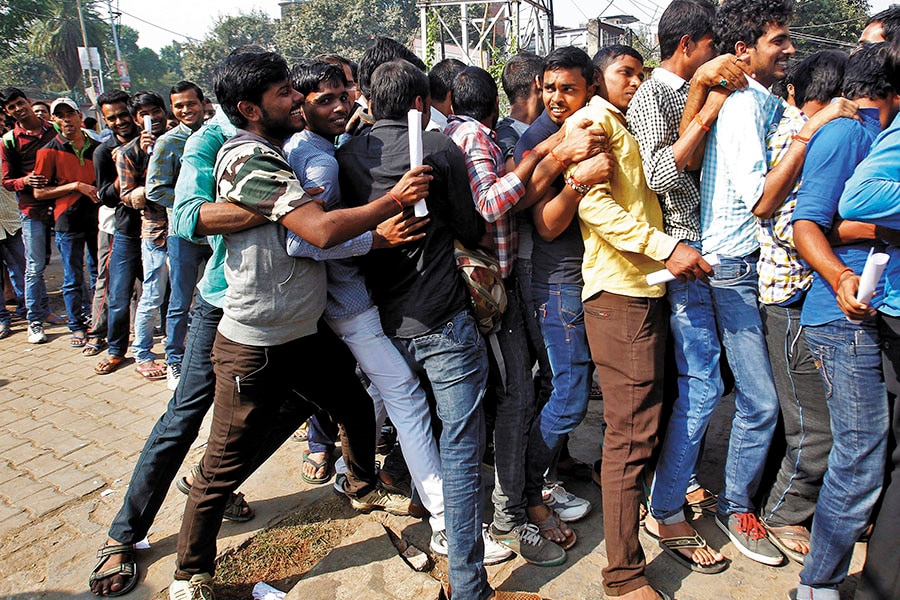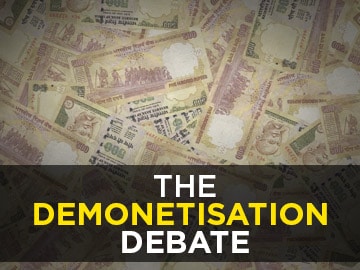
Demonetisation is a first step; bigger measures needed
The recent demonetisation has destroyed Rs 2-3 lakh crore of black money. But we await the logical continuation against the menace

The bottlenecks and delay in replacing old notes will have a deflationary impact on the economy
Image: Jitendra Prakash / Reuters
The 14th edition of the World Bank’s Doing Business report—commonly referred to as ease of doing business (EODB)—ranks India at 130 out of 190 countries. The country’s rank has moved up by just one notch since last year and, to that extent, it is disappointing. Prime Minister (PM) Narendra Modi had announced an ambitious target to take India to the top 50 by 2018. EODB is also integral to the prime minister’s Make in India initiative.
The EODB ranking is based on ten well-defined metrics, and India fares poorly on four of them: Starting a business, getting construction permits, resolving insolvency and enforcement of contracts. The latter two are getting addressed through a new insolvency and bankruptcy code and judicial reforms, respectively. The first two require the cutting of the proverbial red tape and the unnecessary burden of bureaucracy.
The hidden and silent word in this context is ‘corruption’. The prime minister and his party rode to victory on a powerful anti-corruption plank. The outcome of corruption is black money and ill-gotten wealth. Black money is created not only by tax evaders or government officials through the abuse of their discretionary powers, but also more ominously through illegal activities such as terror financing and drugs. So, an attack on black money was to be expected, as part of a multi-pronged, anti-corruption strategy.
What the nation was unprepared for, was not just a ‘surgical strike’, but a pressing of the nuclear button. The PM’s announcement—to demonetise high-value currency notes of Rs 500 and Rs 1,000 denominations on November 8—meant that 86 percent of the nation’s currency would cease to be legal tender instantly and was an astounding, unprecedented, audacious and politically risky move.
The banned currency is to be replaced by new notes all over the country’s branches and ATMs, a Herculean logistical challenge. Technically, this is not demonetisation since those high value notes are not being permanently taken out of circulation. They are being replaced by new notes, thus making this a giant currency swap.
The question is, what is the impact on black money and corruption? The problem of black money has two aspects—its stock and the flow. The stock refers to accumulated illegal, or unaccounted, wealth that rarely sits in the form of paper money. More than 90 percent of it would be converted to benami land, gold and ornaments or foreign bank account holdings. The flow, however, depends on high-value notes. Most ordinary folk, even with India’s excessive cash dependence, never have to deal with a Rs 1,000 note for their daily transactions. Thus, it is a store of value, and the preferred mode for tax evaders, terror financiers and drug dealers.
Removing high-value notes from circulation can considerably crimp these activities, and has been advocated by many, including Kenneth Rogoff, former IMF chief economist and professor of economics at Harvard University. But India’s currency swap has not only not discontinued high-value notes, but in fact introduced a higher denomination, the Rs 2,000 note. So what purpose did the currency swap serve?
It certainly neutralised counterfeit currency, whose menace was rising. It also means that if about 25 percent of the old notes are never turned in, then that value is permanently destroyed, nuked. That is an estimated Rs 3.5 lakh crore. Not all of this is ill-gotten wealth. India’s large informal economy operates mostly in cash. It supports typically lower income households and entrepreneurs, and the rural economy. Those households not connected with formal banking tend to store their wealth in paper form. More significantly, the informal economy also sustains on informal finance, through moneylenders, chit funds and hundis. That is likely to take a hit in this currency swap.
So, in the short run, to the extent that replacement of old notes is getting delayed (due to bottlenecks in distribution and printing), it will have a deflationary impact on the economy. Consumption spending, especially from rural and informal sectors, will dip.
The short-to-medium-term positives are as follows. Bank branches are now flush with deposits. Indeed even the Jan-Dhan Yojana zero-balance accounts showed a surge of 300 percent, raising some eyebrows and prompting an inquiry. The huge deposit growth will lower lending rates, possibly creating conditions for a rate cut by the Reserve Bank of India (RBI). Another impact is via the balance sheet of the RBI. Since cash in circulation represents the liabilities of the RBI, to the extent that about 25 percent is permanently extinguished, it represents a net gain. However, this will not immediately translate into any fiscal gain. Rather it will give RBI more room for injecting extra liquidity to tackle temporary shortages, or to be better prepared for contingencies like sudden capital flight and rupee depreciation.
The prime minister promised an equally big bang announcement in the coming months. To make a big impact on the stock (as against flow) of black money, the next obvious target is benami land holdings and unaccounted holdings of gold and jewellery. By using a clear triangulation of digital land records, Aadhaar-based bank accounts and high value transactions data, it will be possible to make a dent on at least a fraction of the problem. The very threat or promise of action will also deter future attempts to convert black money flow into benami land holdings.
This is a big bang announcement that can have a serious impact on corruption. However, the future creation of black money has to be curtailed by discontinuing high-value notes permanently. It is hoped that one part of this big announcement will involve slowly withdrawing the Rs 2,000 and Rs 1,000 notes.
Finally, one must note that India is in a sweet spot and opportunistic moment as we are seeing an exponential increase in digital wallets, online payments, financial inclusion through the Jan-Dhan Yojana, online banking and so on. There is clearly a move towards a less cash economy if not a cashless economy. That has inherent features on putting a crimp on black money transactions because the digital trail makes it impossible for people to evade or elude taxes.
In summary, this is a giant currency swap as a first step, a shock-and-awe treatment which destroyed perhaps Rs 2-3 lakh crore of black money stock with a possible adverse impact in the short run. But we await the bigger steps of going after benami land holdings and other forms of ill-gotten wealth apart from discontinuing higher denomination notes. These steps have to be seen as a logical continuation of several efforts that the government has taken in the last two years.
The government’s determination to go after illegitimate wealth and corruption with unthinkable audacity, if sustained, can renew the citizens’ trust in governance institutions. The proof would be not only an improvement in the EODB rank but also in Transparency International’s global ranking on corruption.
(Ajit Ranade is the chief economist at Aditya Birla Group. Views are personal)















